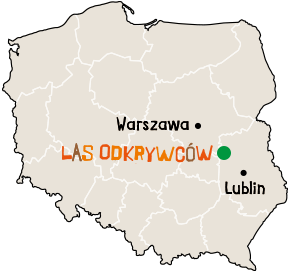Tree trunks. Identification action!
There are many different species of trees growing in the Las Odkrywców. If you look at each of them carefully, you’ll notice how their trunks vary in color, pattern and texture.
The Silver birch (Betula pendula) is very easy to recognize because of its unique bark. In younger trees, the bark is white, thin and flaky. However, in older trees, it has many cracks and appears black in the lower part of the tree trunk.
A young Rowan (Sorbus auccuparia) has olive green colored bark, whereas an adult tree ranges from a pinkish-brown to a silvery-gray color. Rowans are shiny and often very smooth. In old age, the wood begins to slightly crack and flake off in horizontal strips.
The bark of a young European ash (Fraxinus Excelsior) is ash-gray and very smooth. As it ages, the bark begins to crack slightly.
The Norway maple (Acer platonoides) has a dark gray colored bark that is shallow and fissured horizontally.
The bark of a small-leaved lime (Tilia mordata) is brownish-gray and has dense horizontal furrows.
The Black alder (Alnus glutinosa) has a cracked bark that is a very dark gray, if not almost black, color.
White willows (Salix alba) also have a dark gray, cracked bark.
Forest Fun Fact
The bark of a rowan is often gnawed at by hares, roe deer, and deer.
A White willow’s bark is rich in salicylates and can act as a natural pain killer or an anti-inflammatory drug.
Hey, Explorer!
Search through our forest for the trees named on this board. Do you think you can find them all?!

